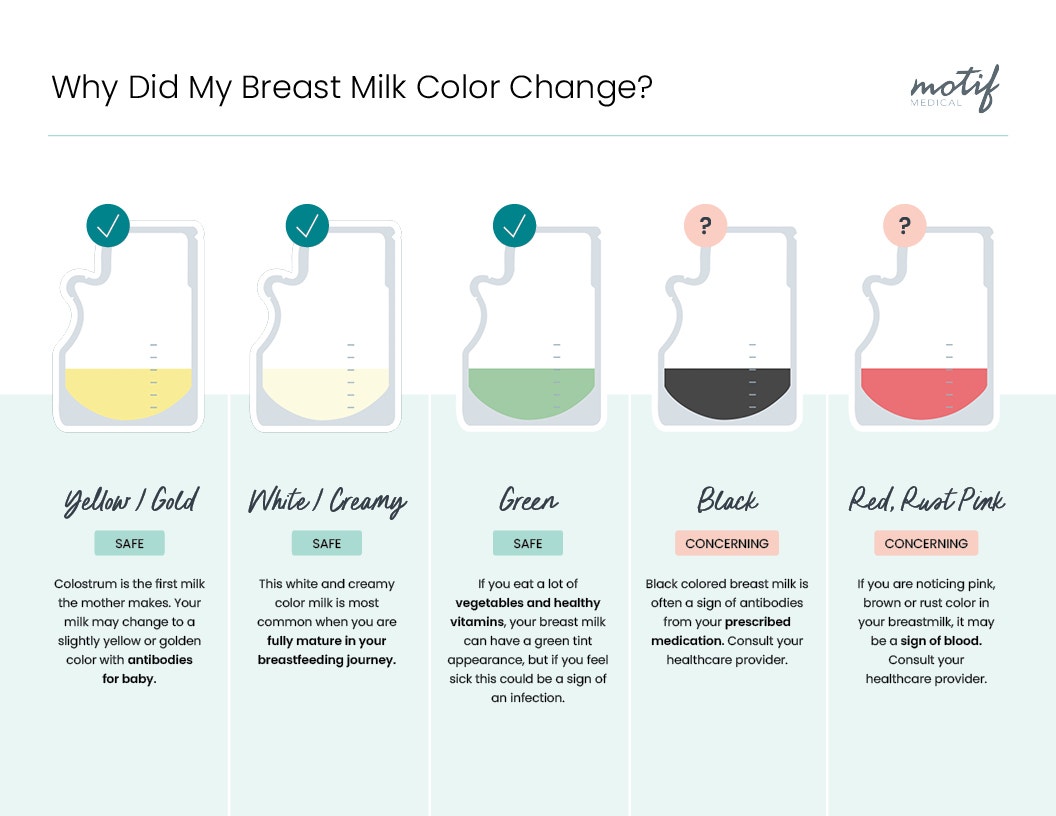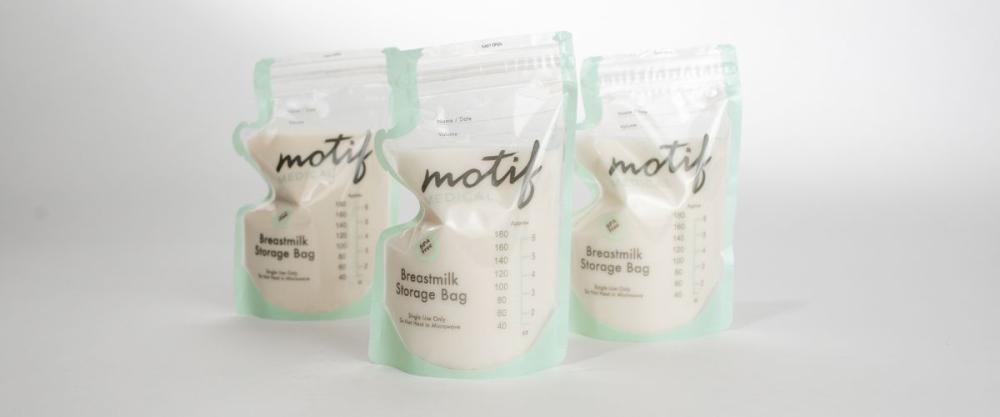From day one of your body producing milk as colostrum to throughout the entirety of your milk-making journey, breast milk can and will change color. But why? As volume increases and composition adjusts, we begin to see that milky-white we think of when we think of milk.
There are other colors that you may notice, especially if you’re pumping. Colors range from golden yellow, to white, to blue, green, and even pink. They are all indications of subtle changes to the composition, your own personal nutrition, medications you may be taking, ruptured blood vessels, infections, and illness.
Gold or Yellow
● Colostrum “first milk”
● Transitional milk, colostrum to mature
● Fighting infection (maternal)
● Fighting infection (infant)
Milk composition in terms of these immune factors updates in real time, and when a nursing child is sick and actively fighting off something, can be visualized if pumped or expressed. The milk will change to slightly yellow, dark yellow, or golden, almost as if reverting back to colostrum from the first day's postpartum. The same with the mother’s immune system- the milk will adjust accordingly in preparation for protecting the baby from infectious diseases or viruses.
It takes 3-5 days for mature milk to fully transition, and if pumping or expressing, you can see this change from the first days of tiny, concentrated and condensed amounts of golden milk, to yellow, to the creamy color we expect to see when talking “milk.” This is incredible, as it follows the ability of the baby to physically accept larger volumes and their stomach’s ability to stretch after day 3.
White or Creamy Breast Milk
Hind milk or “fatty milk”, the color most think of in regard to milk. This is the color of mature, fully-transitioned milk. Fat is emulsified, or mixed in, with the other macronutrients. The thick, fatty composition and rich vitamins and minerals will create this creamy color we know and look for.
Clear or Blue Breast Milk
● Separated milk composition
● Foremilk or “Morning Milk”
Milk composition in terms of macronutrients vary slightly throughout the day, having more volume in the early morning, and gradually more fat content as the day progresses. The morning milk, along with foremilk, the first amount of milk ejected during a feed, can be clear or light blue in appearance. This can also be seen if milk is left to sit and separate.
Green Breast Milk
Food dyes, like in sports drinks, dark green vegetables, and certain supplements may contribute to a greenish hue. In a recent study, blue green algae supplements, commonly used by vegans and vegetarians, were found to tint breast milk a blue-green color. No known side effects were found.


Pink or Brown Breast Milk
● Food dye
● Potent Natural Food Colors
● Blood
● Cancer (rare)
This may be caused by one of several factors. Artificial food dyes, commonly found in sports drinks, or potent natural food coloring, such as beets, can alter the color of breastmilk. Pink, brown or rust may also be a sign of blood, which is still safe to ingest, but warrants investigating. Blood could be from increased blood vessel use in the breast tissue, cracked nipples, or on the rare occasion, breast cancer. We may also see blood if you have had infections in the breast tissue involving puss, or persistent clogged milk ducts that are accompanied by inflammation.
Black Breast Milk
Medications like minocin (minocycline), safe to take for short periods of time while nursing, can make milk appear black. This medication may cause dental or bone implications, from staining to bone deposition, so is contraindicated to taking long term or for repeat cycles while breastfeeding. Watch for rashes, diarrhea and thrush (yeast overgrowth.) Topical minocycline is deemed safe with no side effects for the breastfeeding baby.
National Institute of Health, LactMed
https://www.llli.org/breastfeeding-info/color-of-milk/
https://www.liebertpub.com/doi/abs/10.1089/bfm.2018.0184?journalCode=bfm https://www.ncbi.nlm.nih.gov/books/NBK501031/
Information provided in blogs should not be used as a substitute for medical care or consultation.







